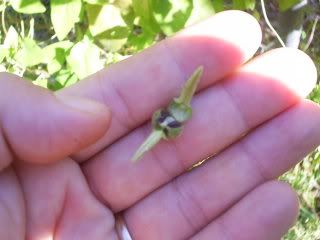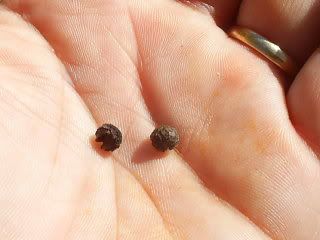
The Black Eyed Susan(Rudebekia) is an easily recognizable plant native to most of North America. It most often grows in moist thickets or fields. It can reach a height of around 3 feet, and has alternate, mostly basal leaves 4 to 8 inches long, covered by coarse hair. The Black Eyed Susan flowers from June to October. The familiar yellow ray florets circling a brown or black, domed center, makes it a plant that is easily distinguished.

The roots but not seedheads of the Black Eyed Susan can be used much like the related Purple Coneflower. It is an astringent used as in a warm infusion as a wash for sores and swellings.
Black Eyed Susan

Black Eyed Susan


The Ojibwa used it as a poultice for snake bites and to make an infusion for treating colds and worms in children. The plant is diuretic and was used by the Menominee and Potawatomi. Juice from the roots had been used as drops for earaches. The spring greens can be cooked and eaten.
Great Info Beloved One! I always learn something here, and that...is a good thing!
ReplyDelete(((xoxoxo)))
What about the variety of Black eyed susan that I find in the nursery with the red centers and yellow petals, or burgundy centers and read/orange petals? Can they be used the same way?
ReplyDeleteMy landlords Black eyed susan cross pollinated with my eggplant this year. The fruit was a pale yellow color and i know it was from the black eyed susan because there was a huge patch of those flowers next to the eggplant plant. Not only did the color get a pale yellow color but the fruit split into a siamese twin of two fruits. Out of the about 21 eggplants fruit i harvested from the one plant (they were smaller variety with more fruit) about 9 were the yellow color. About 6 of the fruit were siamese twin yellow colored. Last year I grew a heirloom tomato in the same spot and I got about 6 siamese twin tomatoes out of about 26 tomatoes. It wasn't until this year where I grew the eggplant in the same giant container next to the black eyed susans that I noticed the yellow color and the genetic mutation of siamese twins (two fruit coming off of the same flower) that i realized that the reason for the mutation last year of the tomatoes. In other words the color was the marker which gave me the explanation for the mutation. Also, this was a giant hybrid black eyed susan patch with stems that go 4 to 6 feet tall. There also are self seeding sunflowers in the same patch so its possible the color alteration (and mutation) is from the sunflower plants. But since there are so many susans growing there in prolific fashion i am assuming it was them and the susans flower earlier in the summer too. And the mutation happens by end of June. Another observation is the giant eggplant I grow typically get the mutation on the side of the plant closest to the susan flowers.
ReplyDeleteThis is not possible. Black eyed Susan's are not even remotely related to eggplants. This can not and will not ever happen.
Deletemy spaghetti squash cross pollinated with punkins... grew orange .. but inside was still spag squash .. had the neighbors over all the time trying to figure out what was growing lol
DeleteAs Steve said, viable cross pollination of eggplant and black-eyed Susan is absolutely impossible. Eggplant is in the same family as potatoes and tomatoes, while the flowers are in the composite family (dandelions, asters, lettuce, ragweed, and many more). You had an eggplant that may have had a natural mutation, or may have been affected by a mutagenic chemical in the planter. Or it could have been with a non-mutation-causing chemical that had other effects on the plants.
DeleteThe twin fruits are probably not a genetic mutation, but the result of a process called fasciation, which is though to be hormonal in nature. It can also be caused by bacterial, viral, or fungal infections.
Hi, Can anyone tell me if the actual flower pedals of the Black Eyed Susan is edible? I am drawn to this plant. It feels very healing to me and I don't have snake bite, worms or an ear infection. You can't help but be drawn to its beauty but its more than that. Something seems so extremely healing about this plant as in medicinal. I have searched and searched and there is NO information I can find on mention of the pedals. Only greens and seeds. Can you shed some light on this for me. Now that I know the info is so publicly limited, I'm even more convinced there is something special about it. I am so close to breaking the never ingest unless you KNOW rule. Every time I walk by them, and my property is covered in them, I get the urge to "try" it. Can you share knowledge on the pedals? If so, I would be very sincerely appreciative.
ReplyDeleteAre,pedals enable make tea with them drank now worried.
DeleteDoes anyone know the nutritional value of Black Eye Susan leaves? I understand the leaves can be eaten after cooking. Can raw the leaves be incorporated in a salad? Any nutritional benefits?
ReplyDeleteNo, you need to cook them because they have oxalic acid. It need to evaporate and you can only do that when cooking
DeleteCan you use the petals to make an infusion to make jelly?
ReplyDelete